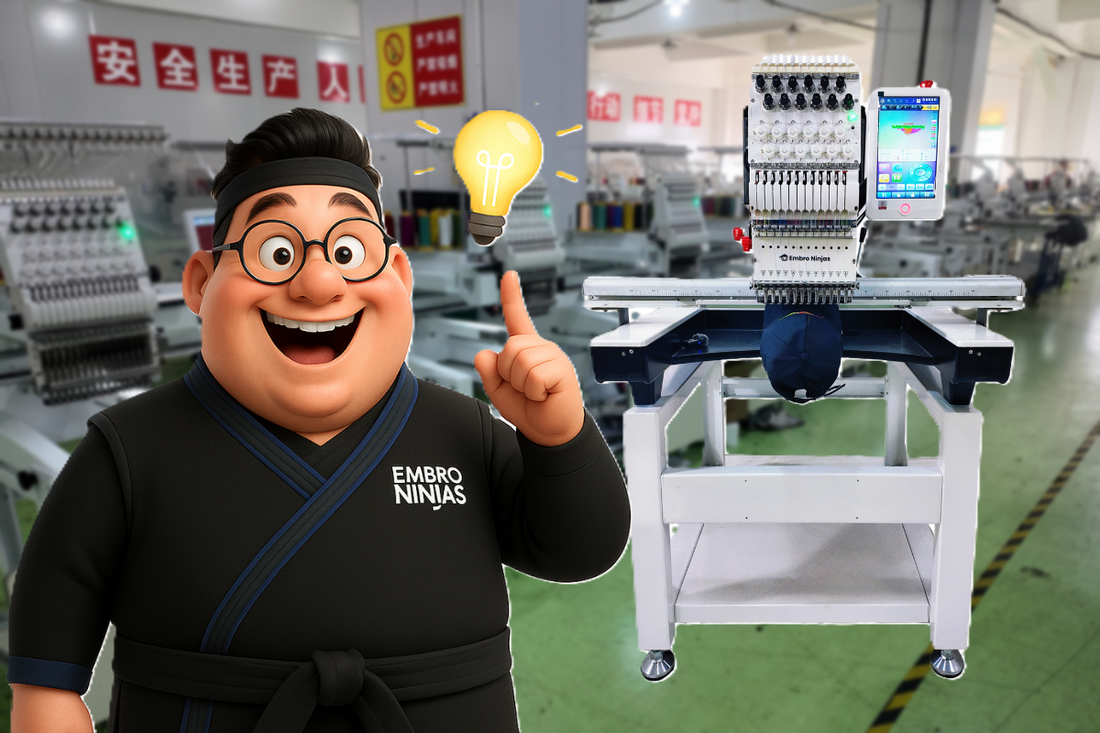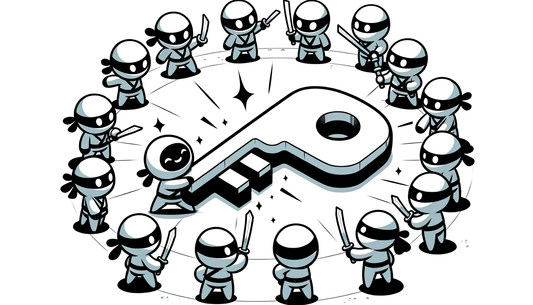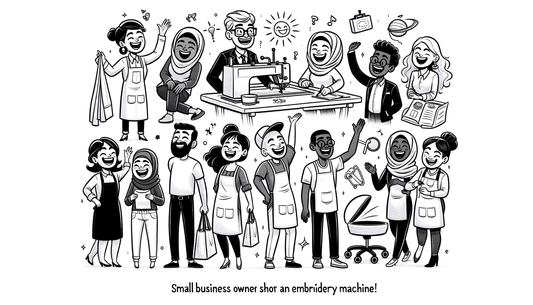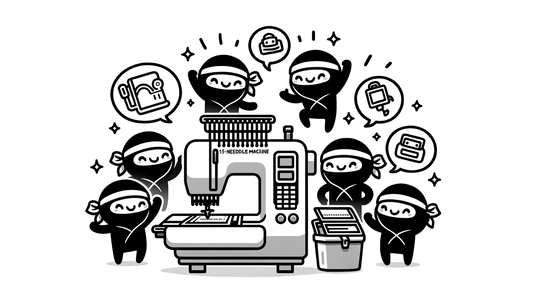
Maximize ROI with Smart Cost & Pricing Strategies
Share
Embarking on an embroidery venture promises creative fulfillment and financial rewards. However, understanding the financial landscape is crucial to turn your passion into a profitable business. This guide breaks down the essential elements for calculating your Return on Investment (ROI) and pricing your services for success.
Understanding Your Revenue Potential
Your embroidery business's revenue hinges on several factors, primarily the capabilities of your machine, the number of items you can produce, and your pricing strategy. Single-head machines, like the versatile and affordable NinjaStarter from Embro Ninjas, are ideal for startups and small businesses. The NinjaStarter's customizable embroidery area sizes and high speed (up to 1200 SPM) can significantly influence your output and, consequently, your revenue.
Did you know that the average US embroidery business reports profit margins of 15-20%? To illustrate, generating a $60,000 annual profit with a single-head machine requires selling embroidery at an average of just $2.71 per unit, assuming a production rate of 18,000 stitches per hour and a cost base of $1.11 per unit. To maximize your value, you can explore machine options through a virtual demo.
But don't stop there! Embroidery shops can significantly boost their income by offering additional services, such as design consultation and customized projects, or even by selling equipment. Explore Embro Ninjas' blogs for more ideas on how to diversify and grow your business.
Decoding the Cost Analysis
Understanding your cost structure is paramount for accurate pricing and profitability. Let's delve into the key cost components:
- Material Costs: Expect to spend around $0.10 per embroidery for standard fabric and thread. Specialty threads can increase this by 10%, while high-quality fabrics can add $0.15. High-density designs also add about $0.10 per embroidery.
- Labor Costs: Labor typically costs $0.30–$0.35 per 1,000 stitches, depending on the operator's skill. Rush orders command a premium of $0.10 per 1,000 stitches.
- Design/Digitizing Costs: Simple designs may cost $20 to digitize, medium designs $40, and complex designs $60. Don't forget software licensing fees, which can be around $5 per order.
- Equipment Costs: Account for depreciation ($0.07 per 1,000 stitches) and maintenance/repairs ($0.05 per 1,000 stitches). The NinjaStarter, with its reliable, high-quality Japanese components, aims to minimize these ongoing maintenance costs. You can also customize your embroidery machine based on your personal preferences. Take a look at Embro Ninjas' customization options.
- Utility Costs: Factor in electricity ($0.03 per 1,000 stitches), space/overhead ($0.02 per 1,000 stitches), administrative costs ($0.05 per 1,000 stitches), and insurance ($0.04 per 1,000 stitches).
Remember to adjust your pricing based on regional market variations (+$0.10 per 1,000 stitches for high-cost regions) and competitive pricing (±5%). Finally, add your target profit margin (e.g., 15–20%) to ensure business growth.
The formula for calculating your cost per 1,000 stitches is:
Cost per 1,000 Stitches = (Base + Variable + Labor Costs) / Total Stitches × 1,000 + Profit Margin
Calculating Your Embroidery ROI
To accurately model your ROI, consider the following interactive components:
- Machine Cost/Investment: The NinjaStarter offers exceptional value, especially compared to typical industrial machines.
- Number of Machine Work Hours per Day: Plan for 4–6 hours of embroidery time in an 8-hour day.
- Average Stitch Output per Hour: Aim for around 18,000 stitches/hr. The NinjaStarter's speed and automation features help maximize this.
- Average Selling Price per Item: Base this on your detailed cost analysis.
- Operating Costs: Include all the costs detailed above.
- Target Profit Margin: Aim for a healthy margin to cover growth.
- Number of Working Days/Year: Typically around 260 days.
ROI/Breakeven Calculation Steps:
- Calculate total annual revenue: Annual Revenue = Units Sold per Year × Average Price per Unit
- Calculate total annual costs: Annual Costs = Operating + Material + Labor + Equipment
- Subtract annual costs from annual revenue to determine net profit.
- Calculate break-even point (in months): Break-even (months) = Initial Investment / Average Monthly Net Profit
Using profit calculators lets you experiment with variables and see how pricing, volume, and machine utilization affect break-even and profitability. Be sure to check out Embro Ninjas' virtual demos so you can see machines in action, get a detailed look at different features, and get professional feedback for your business.
Navigating Market Factors
Several market factors can significantly influence your profitability:
- Local Demand: Assess your target market (small businesses, schools, teams) and the competition.
- Order Volume: Higher volumes allow for economies of scale.
- Niche/Value-Added Services: Customization, quick turnarounds, and unique design services command premium pricing.
- Regional Pricing: Adjust prices based on local competition and cost of living.
- Repeat Business: Loyalty programs and relationship-building create revenue stability.
- Efficiency & Automation: Investing in faster machines increases capacity and reduces per-unit costs. The automation features on the NinjaStarter, such as auto-trimming and auto-color change, can significantly boost your efficiency.
Smart Pricing Strategy
Implement these guidelines for effective pricing:
- Calculate your true operating cost per hour and per stitch, including downtime and setup.
- Mark up the garment cost (typically 30%) if you provide the blanks.
- Factor in all costs (materials, labor, machine time, digitizing) before adding your profit margin.
- Use a cost-plus model to determine your required charges for achieving income targets.
- Adjust pricing for rush orders, specialty threads, or complex designs.
- Update your price list regularly to reflect current costs and market conditions.
Understanding the Break-Even Timeline
To calculate your break-even timeline, divide your initial investment by your average monthly profit. Adjust your analysis based on part-time versus full-time machine use and factor in all fixed and variable costs, including depreciation and maintenance. Understanding how the numbers work can help you build a business plan and apply for funding. You can learn more about Embro Ninjas' company history and vision, and the team's commitment to supporting entrepreneurs.
Growth Strategies for Long-Term Success
To propel your embroidery business forward:
- Offer unique customization or quick-turnaround services for higher margins.
- Add value with extra services like design consultation and digitizing.
- Use technology and efficient machines for better output. The NinjaStarter boasts intuitive controls and connectivity for seamless workflow.
- Focus on customer retention and repeat business.
- Adjust your marketing efforts based on market demand and competition analysis.
Question: How can I reduce my embroidery business's startup costs?
Focus on affordability and efficiency; consider a high-value machine like the NinjaStarter and start with essential supplies.
Reducing startup costs involves strategic decisions such as opting for a versatile, affordable machine like the NinjaStarter, which delivers high-end features at a competitive price point. Begin with only essential supplies, consider leasing options for your machine, and leverage free or low-cost marketing methods like social media. Additionally, networking with other embroidery professionals can provide valuable insights and potential cost-saving opportunities.
Question: What is the best way to price custom embroidery projects?
Calculate all costs (materials, labor, digitizing) and add a profit margin based on market rates and the project's complexity.
To effectively price custom embroidery projects, start by thoroughly calculating all direct costs, including materials, labor, and digitizing fees. Research local market rates to understand the average prices for similar services. Add a profit margin that reflects the complexity of the project, the time required, and any special skills involved. Consider offering tiered pricing options to cater to different budgets and project scopes, and always communicate your pricing clearly to avoid misunderstandings.
Question: How important is machine maintenance for embroidery business profitability?
Regular machine maintenance is essential for preventing downtime, reducing repair costs, and ensuring consistent output and quality.
Regular machine maintenance is critical because it minimizes unexpected downtime and costly repairs, ensuring your equipment operates efficiently. By keeping your machine in optimal condition, you'll maintain consistent output and quality, leading to higher customer satisfaction and repeat business. Simple maintenance tasks, such as cleaning and lubricating parts, can significantly extend the lifespan of your machine and protect your investment.
Summary: Unlock your embroidery business potential by carefully managing costs, strategically pricing your services, and investing in efficient equipment like the NinjaStarter. Understanding key market dynamics and focusing on customer retention will pave the way for sustainable growth and profitability.


